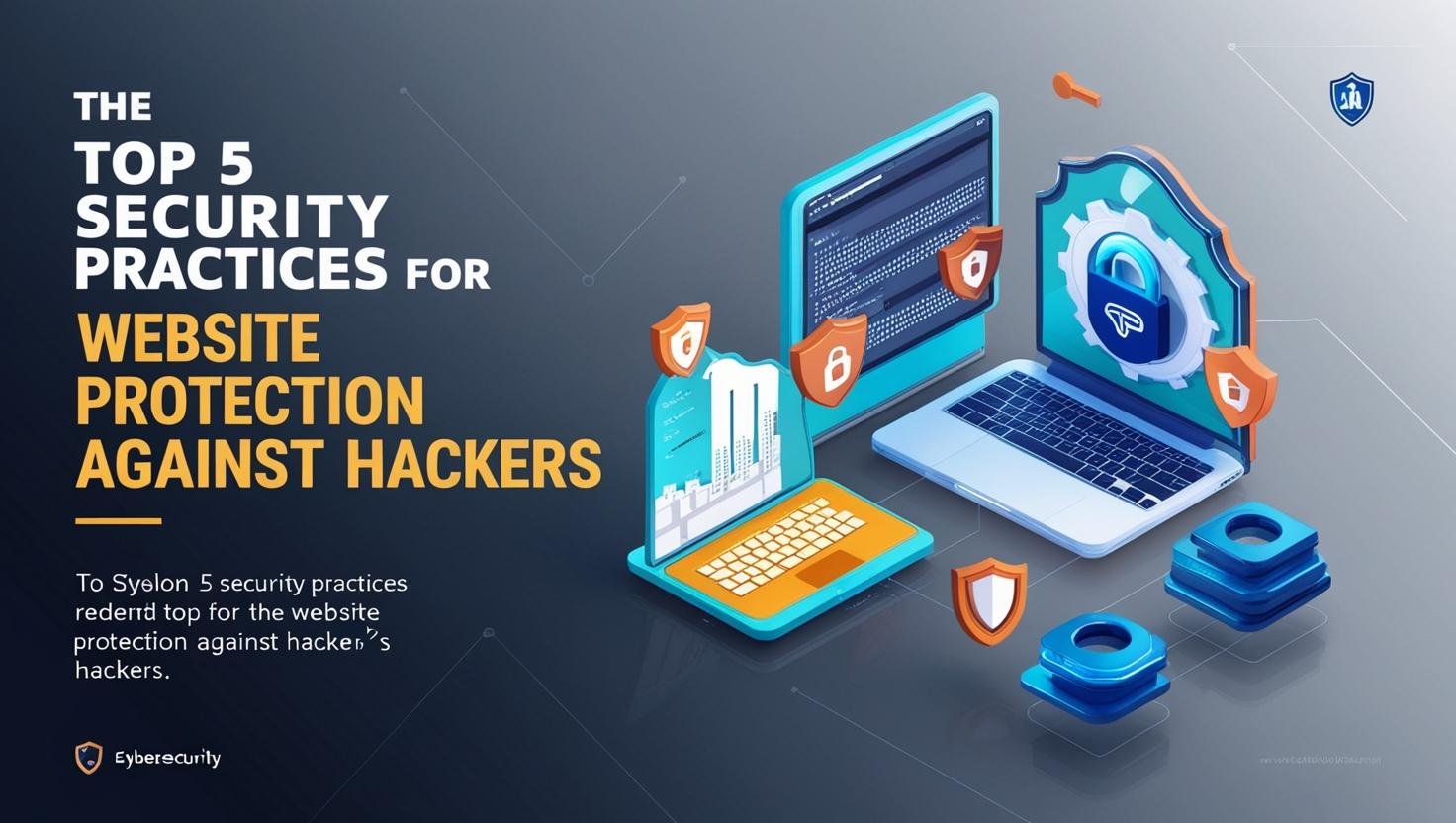🔒 Top 5 Security Practices to Protect Your Website from Hackers
In today’s digital world, your website is your most valuable online asset — and hackers know it. With cyberattacks increasing globally, businesses of all sizes need to prioritize website security. According to Statista, over 30,000 websites are hacked daily — and many businesses are unaware until it’s too late.
In this blog, we’ll walk you through the top 5 security practices to protect your website from hackers, along with real analytics and a case study showing why these steps matter.
1️⃣ Keep Software & Plugins Updated
Outdated software is one of the most common attack points. Whether you’re using WordPress, Joomla, Magento, or a custom CMS, failing to update plugins, themes, and core software opens the door to hackers.
✅ Analytics Insight:
- 52% of website vulnerabilities come from outdated plugins (Sucuri, 2023).
- 60% of hacked WordPress sites had outdated installations.
💥 Tip: Enable automatic updates where possible, and schedule regular manual checks.
2️⃣ Use Strong Passwords & Enable Two-Factor Authentication (2FA)
Weak passwords are like leaving your front door open. Combine a strong password policy with 2FA for admin and user logins.
✅ Analytics Insight:
- 81% of hacking-related breaches are due to weak or stolen passwords (Verizon DBIR, 2023).
💥 Tip: Use password managers like LastPass or 1Password, and activate 2FA via apps like Google Authenticator.


3️⃣ Install an SSL Certificate
An SSL certificate encrypts the data transmitted between your website and users. Not only does this improve trust, but Google also gives ranking boosts to SSL-enabled sites.
✅ Analytics Insight:
- 85% of online shoppers avoid sites without HTTPS (GlobalSign, 2023).
💥 Tip: Obtain an SSL certificate and regularly renew it. Many hosting providers now offer free SSL certificates.
4️⃣ Backup Your Website Regularly
No system is 100% hack-proof. Regular backups ensure you can quickly restore your website if the worst happens.
✅ Analytics Insight:
- 58% of small businesses are not prepared for data loss, and 60% fail within 6 months of a major data loss event (National Cyber Security Alliance).
💥 Tip: Use automated backup tools and store backups offsite or in the cloud.
5️⃣ Use Web Application Firewall (WAF) & Monitor Activity
A Web Application Firewall (WAF) filters malicious traffic before it reaches your website, protecting against threats like SQL injection, cross-site scripting, and DDoS attacks.
✅ Analytics Insight:
- WAF users experience up to 80% fewer attacks (Imperva, 2023).
💥 Tip: Combine WAF with tools like Google Analytics and server logs to monitor suspicious activity.
📊 Case Study: How We Protected a UAE E-commerce Client
A leading UAE e-commerce site faced daily brute-force attacks that slowed down their site and caused checkout failures.
Our team at SaaS Web Works implemented:
- Software updates & patching
- Strong password & 2FA policies
- Free SSL installation
- Daily automated backups
- Cloudflare WAF setup
Results after 30 days:
✅ 99.9% attack prevention rate
✅ 43% increase in page load speed
✅ 25% boost in checkout conversions
✅ Zero downtime during holiday sales
🔐 Final Thoughts
Website security is not optional — it’s an ongoing process that protects your business, customers, and reputation. By following these five proven practices, you can dramatically reduce your risk of a costly attack.
📞 Need Help Securing Your Website?
At SaaS Web Works, we specialize in website security, audits, and ongoing protection.
✅ Visit: www.saaswebworks.com
✅ WhatsApp us: https://wa.me/919600150016
Protect today, grow tomorrow!


Comments (3)
Mellisa Doe
June 10, 2023 - 8:25 amAs the world continues to fight COVID-19 some property owners are searching
for way they can improve the security of their buildings.
Tyson Fritz
June 10, 2023 - 8:28 amBy automating your doors this removes need for people touching handles
or surfaces. Both of the above options.
Mellisa Doe
June 10, 2023 - 8:26 amBy automating your doors this removes need for people touching handles
or surfaces. Both of the above options.